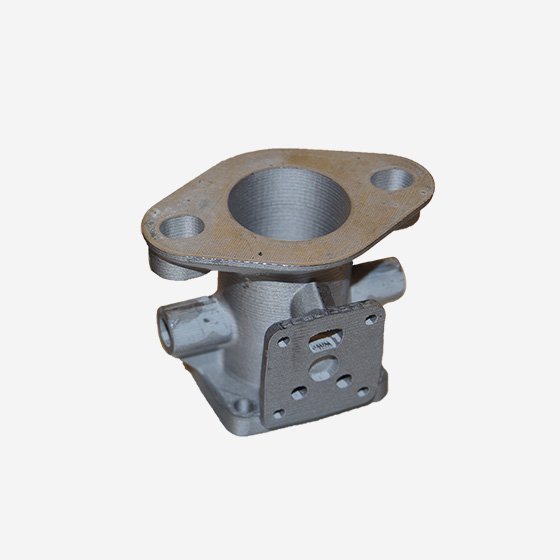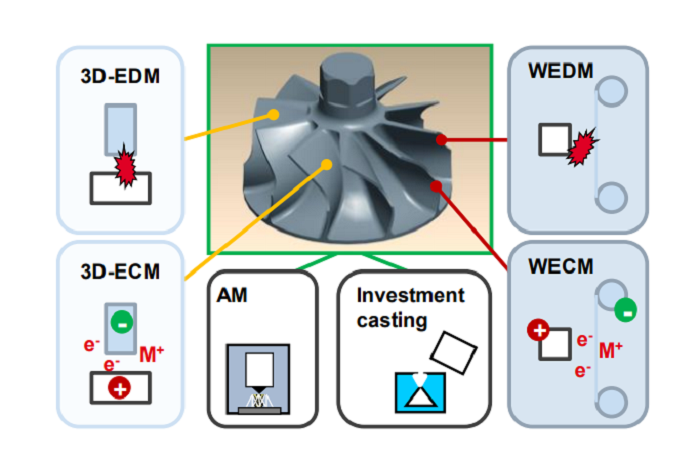Guy J. Ofek has spent over 16 years helping companies find the best manufacturing solutions throughout Asia. Nearly 11 years of those were in 3D Printing for Stratasys and other vendors. This has made him a seasoned veteran in the field. Guy now works for GF Machining Solutions, a leading provider of machine tools, solutions, and services that is bringing automation and integrated manufacturing to 3D Printing. We’re all becoming aware that the current area of expansion in 3D printing is on the concrete floors of manufacturing facilities worldwide. Companies are taking the lab boxes that were made to discover new materials and print prototypes and try to turn them into production devices. Whereas in the marketing copy and press releases everyone is a professional and focused on manufacturing, very few companies are actually manufacturing using 3D Printing. Those who do, quickly find out that they need to integrate this foreign process into tried and true systems, facilities and processes. This is difficult and leads to tough projects worldwide that need new thinking, new processes, and new machinery.
GF Machining Solutions is a firm that has squarely put itself in between that problem and possible solutions for clients. It’s a bold and smart play for a 1,066 million Swiss franc revenue firm with close to 4,000 employees. GF Machining Solutions offers an extensive portfolio, ranging from Electrical Discharge Machining (EDM) solutions, Milling machines and Spindles to 3D Laser texturing machines, Additive Manufacturing and machines for Laser micromachining targeted at the aerospace, automotive and medical segments, among others. All of these areas have seen strong impacts from 3D printing. A few years ago, GF Machining Solutions, on the one hand, has found itself under possible disruption by 3D printing, while on the other has found its machining solutions being used extensively by the 3D printing industry. Wire-cutting EDM (WEDM, Wire EDM) is almost a necessary step for many metal 3D printed parts. The firm has since taken its many complementary skillsets and has begun offering integrated solutions for the 3D printing industry. With partnerships, devices and solutions, GF Machining Solutions seems to be one of only very few large industrial machine tool companies taking 3D printing seriously at the moment, so we thought it very prudent to find out what the firm is up to.

What is GF Machining Solutions?
GF Machining Solutions is the world’s leading provider of machine tools, diverse technical solutions and services to manufacturers of precision molds and tooling and of tight-tolerance, precision-machined components. The key segments we serve include the aerospace, automotive, medical, energy, information and communications technology (ICT) and electronics industries. Our extensive portfolio ranges from Electrical Discharge Machining (EDM) solutions, three- and five-axis Milling machines and Spindles, 3D Laser texturing machines, Additive Manufacturing and machines for Laser micromachining to solutions for Tooling, Automation, Software and Digitalization – all backed by unrivaled Customer Services and support. Based in Switzerland, GF Machining Solutions belong to Georg Fischer AG (FI/N: SIX Swiss Ex) and is present in over 50 countries with its own sales companies. In addition, we operate production facilities and research and development centers in Switzerland, the USA, Sweden, and China.
For a century and a half, GF Machining Solutions has been an innovator and a source of strength to customers. Our history of technology leadership includes expansion into technologies that have spurred our customers’ growth, and – with an eye to the future – we continue to innovate in order to advance the success of our customers in particular and the machine tool industry as a whole.
In Milling, EDM, Laser texturing and Automation technologies across a variety of segments from automotive, aerospace and aeronautics to Medtech, electronic components, and ICT, GF Machining Solutions’ customers worldwide depend on our application know-how and process expertise. Our customers range from small and medium-sized toolmakers to global corporations.
Why did you get involved with Additive Manufacturing?
GF Machining Solutions believe that Additive Manufacturing will play an important role in the future of manufacturing. Given our specific expertise in traditional subtractive manufacturing and Automation, we feel the latter can help bridge the gap between prototyping and manufacturing, especially since metal Additive Manufacturing today―and going into the future―will be all about hybrid manufacturing.
Hybrid production environments will include an additive technology, but also the relevant downstream processes such as Milling, EDM, wire-cutting EDM, Laser texturing solutions and so on, that are required to finish the part, and all these technologies need to be integrated and work in tandem to form the `factory of the future`.
Do you see it working closely with other machining operations?
Yes by all means, in particular when it comes to metal additive, as users must always separate the metal-made part from the metal build plate. This is an operation normally done by band saws or wire-cutting EDM machines, so as part of the GF Machining Solutions mission “To integrate and optimize metal additive workflow“, we will introduce a wire-cutting EDM machine dedicated to metal additive at the coming EMO show this September. It will allow manufacturers to separate parts from the build plate in a horizontal manner. This new AgieCharmilles WEDM product will use GF Machining Solutions’ fast-wire technology and is ready for integration with any other technologies, using its built-in System 3R clamping solution.
In addition, more often than not, the surface quality of parts out of any metal printer out there is insufficient to meet the Ra requirement of tool makers, aero-engine OEMs and many others, who use metal additive to produce final parts, hence the need for Milling technology and or EDM machines to better the surface up to the mark.
How does your extensive experience in machining help you?
It is no secret that the additive industry has been “living on an island”, so to speak, for most of its over 30 years of existence, having serviced mainly applications around product development―in other words, prototypes aimed for fit, form and functional testing. I say “living on an island”, because the additive industry―in the past eight to ten years―has been pushing towards the adoption of the technologies in manufacturing and production environments, which are “the mainland” or the 12 trillion “Holy Grail” if you like, and in this environment, the rules of the game are somewhat different. For instance, in the world of product development, one must employ absolute flexibility allowing to design and test as many variations as possible of that one specific product in order to establish which one actually works best.
Production environments, on the other hand, have almost the opposite mindset in the sense they allow zero flexibility and mandate tight tolerances. Their goal is always the same, to create as many versions as possible of that one specific product, all while assuring all products are identical and of the highest possible quality.
On top of that, elements such as productivity, robustness, cost efficiency, redundancy, Mean Time Between Visits (MTBV), response time and many more, all are very important when we talk about production, yet have far less importance, if any, in the world of product development.
Considering GF Machining Solutions’ leadership in high-speed Milling with its Mikron Mill machines and in EDM with its AgieCharmilles machines, we feel we have the capacity to better understand the unique needs and challenges of users out there battling the quest of adopting Additive Manufacturing in production environment.
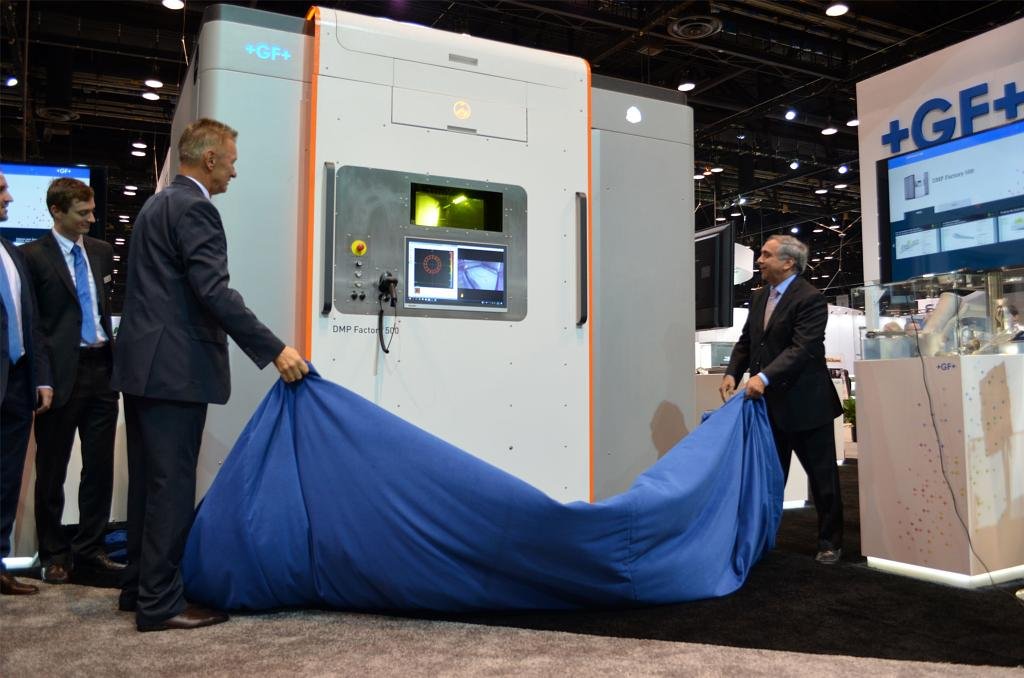
You’ve partnered with EOS and 3D Systems?
Indeed, in the past, we collaborated with EOS in order to promote a specific metal-printing machine (AM 290 Tooling) to the mold and die segment given our strong affinity to the segment. Later in 2018, we announced a strategic cooperation with 3D Systems for jointly developed and integrated manufacturing solutions based on 3D printing. The first product of this cooperation – the DMP Factory 500 metal Additive Manufacturing solution – was launched in September 2018 during IMTS in the US. Now, 11 months after we inked this partnership, we are very happy with the developments made thus far and feel there is much we can do to bring our shared vision of integrated and optimized metal additive workflow to our customers looking to integrate metal additive into their production environments.
You are developing “integrated manufacturing solutions” with 3D Systems, what does that mean?
As GF is a full partner in the design, development and production of some of the co-branded 3D metal printers, the goal of both companies is to jointly develop solutions able to close the gap between the current stand-alone metal AM machines, and the “factory of the future”, where all elements of Industry 4.0 are fully integrated. In other words, in order to be able to realize our shared vision, which have driven the additive industry for years now, and see end-to-end additive solutions actually being integrated into the shop floor, we believe it’s vital to make adjustments to the existing hardware and software environments to enable a seamless and efficient workflow.

For example, at present Additive Manufacturing machines, as well as the much-required post processing―whichever it may be―are very labor intensive, as the entire process is manual. Even if additive manufacturing is not meant for mass production, all agree that automation, of some sort, must be introduced in order to improve the workflow, increase operators’ safety and create a cost-efficient process all together. For these purposes, we took the first step by integrating a System 3R Delphin chuck into the DMP Factory 500, thereby allowing the operator to seamlessly move the build plate (which sits on-top of the chuck) from the metal additive machine onto a wire-cutting EDM or Milling machine for further processing. This saves time in clamping and making dedicated tooling after the part has been separated from the build plate.
Is 3D printing a threat to casting, or will it augment traditional casting operations?
Historically, there were only two traditional ways to turn a raw material into a shape that was as close as possible to the desired product: Forging or Casting, and each had its own pros and cons. With Additive Manufacturing, we now have a third method, which opens new possibilities and as such, is very exciting. Additive, however, has its own limitations, and it is because of that it is perhaps very complementary to Casting.
The Sales Manager of GF Additive SA (AMotion Center) in Switzerland, Mr. Marco Salvisberg, recently noted that on the one hand, 3D printing certainly poses a threat to some investment casting applications, as parts that used to be produced by investment casting are already being 3D-printed today, and one can only expect the scale to grow in the future. This depends on the segment, but with regard to aviation and IGT (Industrial Gas Turbine) business, 10-40% of today’s portfolio of casted parts will be printed in the AMotion Center in the long term.
On the other hand, as Marco added, 3D printing is a great opportunity for the foundries. Wax, ceramic cores and polystyrene printing can drastically reduce development times and tooling costs. In addition, 3D metal printing is a good way for foundries to expand their production portfolio. Printing itself is only a small portion of a long production process, which includes finishing, surface treatment, heat treatment, none-destructive testing etc., the components of which many foundries already have.
Is more automation needed in 3D Printing, and if so, where?
Automation is of course required in 3D printing, much like in any other process or technology, in order to foster productivity and improve workflow efficiency. Automation comes in two basic forms, internal and external, and we foresee that additive, in time, will adopt both. A simple example of internal automation is an Automatic Tool Changer (ATC) in a CNC machine, while an example for external automation could be an integration of a robotic arm―stationary or on a slide base―into a production cell, turning it into a Flexible Manufacturing System (FMS).
The integration of a chuck system into an additive machine, as previously suggested, is the first step when it comes to industrialization of the AM process, in particular for metal additive. It requires the separation of the printed metal part from the metal build plate, as well as several post processes and treatments, which are all aimed at turning a part on a plate into a finished product.
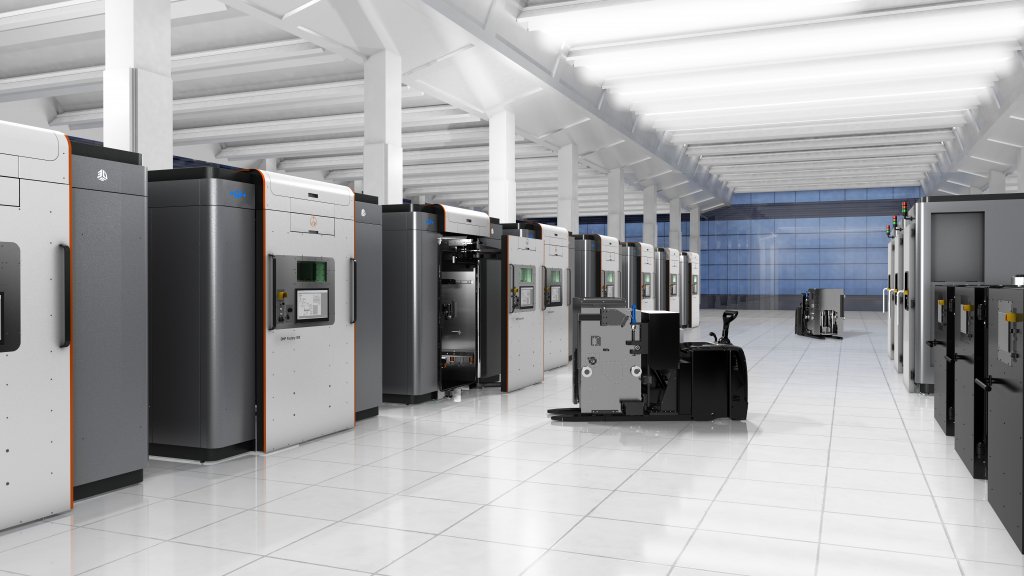
How do you wish to partner with customers in 3D Printing?
Ideally, we see ourselves collaborating with companies and organizations having existing metal additive experience, as those very often understand far better not only the benefits the technology has to offer, but also the challenges and complexities involved in moving from prototyping and R&D to the production floor.
For such users, we believe we bring the most value considering the robustness of our co-branded metal additive solutions – such as the DMP Factory 350 – in addition to the built-in automation it incorporates, which is translated directly to maximum powder utilization and providing a safer environment for the operator.
At the end of the day, the additive process in itself is merely 30% of the entire production workflow, so special attention should be paid to additional downstream processes.
What can you offer them?
As a group, drawing from the combined knowledge and experience in precision engineering and industrial automation, as well as the accumulated expertise in the provision of various casting solutions (iron sandcasting, aluminum and magnesium pressure die casting, precision casting) and additive technologies, we have the unique ability to offer clients far more than just a metal 3D printer.
GF Machining Solutions sees itself as a provider of end-to-end value, ranging from consulting, part design, powders and parameters optimization, rapid prototyping using LPBF, EBM and DMD technologies and part certification (NADCAP) all the way to bridge and serial production of AM parts including processes for surface treatment, machining and coating and supply chain management.
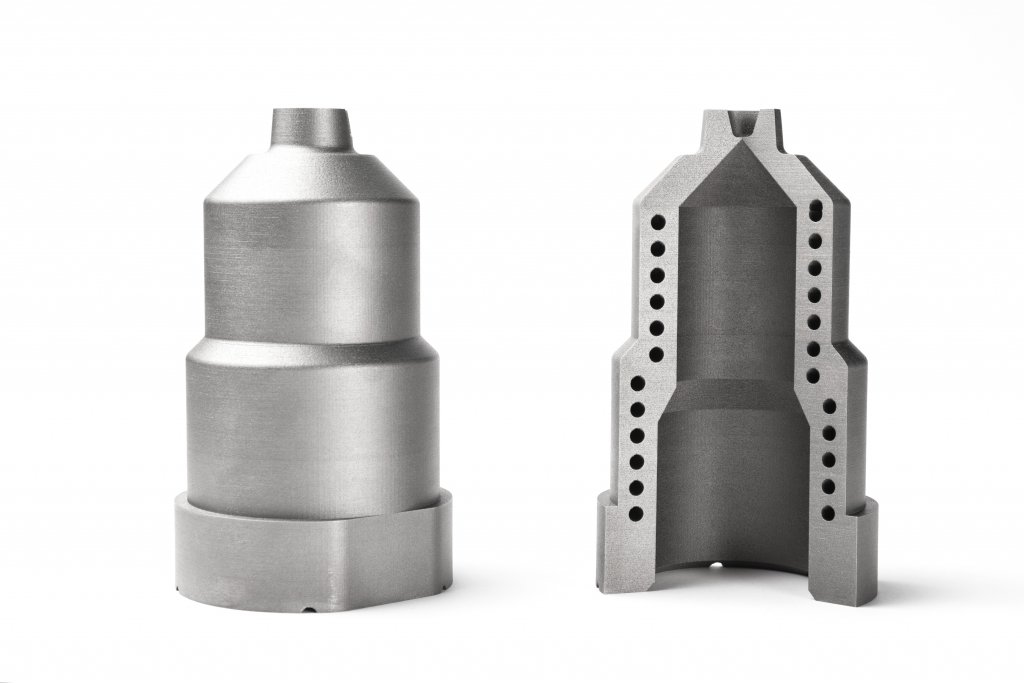
Do you wish to sell machines, solutions, parts?
As our name suggests, GF Machining Solutions is all about solutions rather than selling individual machines or technologies. What sets us apart is our unique ability to offer a wide range of technological solutions on top of our metal additive machines, in conjunction with the ability to integrate such solutions using our System 3R automation product line to create a workflow-optimized metal additive production environment.
For clients looking for part production, application development and such other services, we normally suggest they work with our AMotion Center, which is geared toward consultancy and many other services. Those range from application, powder and parameter development all the way through design for AM, prototyping, bridge and serial production using multiple additive technologies (DMLS, EBM, DED), and above it all, they are NADCAP certified for aerospace and aeronautic companies.
Can you build me a 3D printing factory?
I am confident our decades-long experience and leadership in precision engineering and industrial automation can and will play a part when it comes to offering our clients integrative approach to metal additive. Producing metal additive parts require professionalism and expertise, and considering the fact many additional technologies are required in order to see a finished part, GF I believe is an ideal partner for anyone making his first steps into this fascinating technology and in particular for advanced users looking to move into series production. Such step requires finding ways to lower cost per part, enablement of operation and productivity excellence and reduction of total cost of ownership and I fundamentally believe the metal AM production units we produce, are designed to deliver not only very high quality parts, but also to do so over lengthy periods allowing maximum uptime leading to lower cost per part and a solid return on investment.
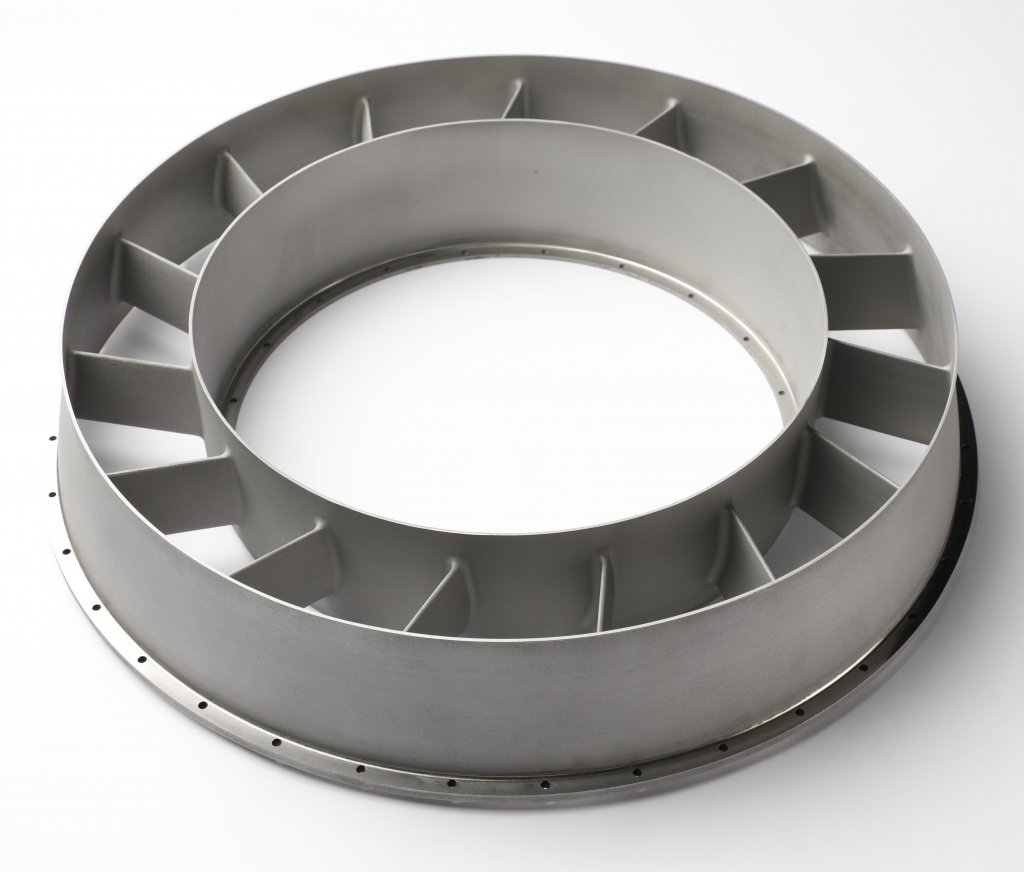
What is the AM market like in Asia?
Asia is a mixed bag as you may know, and as such, one can see all the shades of the rainbow when moving from north to south or east to west. When it comes to metal additive, we see a nice and steady adoption in China and Japan, where users in segments such as aerospace, energy, medical and tooling are using metal additive more and more in an effort to create lighter parts, better functional designs and speed up their lead times. Other than that, we also see interesting opportunities in Korea, Taiwan, Singapore and India, with innovative users looking to either adopt metal additive, or even step up and move into production-related applications, after their R&D departments have been exploring the technology and created viable applications for the past years.

What advice do you have for companies who wish to manufacture with 3D Printing?
Additive is all about customization, different ways to design products and making products in a completely different way compared to what we’ve grown accustomed to, which leads me to believe there is no “one size fits all”. Having said that, what I see separating the winners from the rest of the pack is an innovative spirit, a “can do” attitude, coupled with a drive to learn and develop, and yes, also to fail.
Additive is an industry where everyone is learning and exploring, and in such an environment there are no “Plug-and-Play” solutions. Hence, in order to manufacture with 3D printing, one must first make sure one is in the game, and one willing to fail and unlearn – not only because failure to do so could be detrimental to the viability of the business in the long run, but mainly because the rewards one stands to reap as a result of incorporating additive into the process chain may very well be significant.
The post Interview with Guy Ofek of GF Machining Solutions on Integrating Metal Additive in Manufacturing appeared first on 3DPrint.com | The Voice of 3D Printing / Additive Manufacturing.

